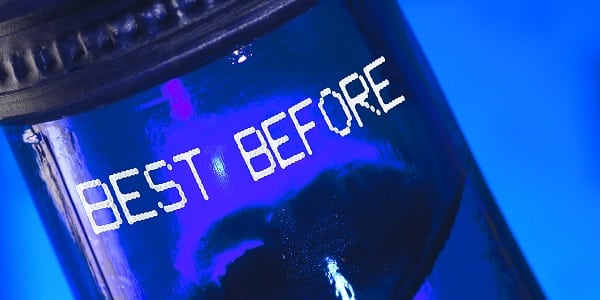Use-By or Best Before Date?
For food processors, date codes are critical, and there are harsh penalties for those who don’t comply. However, it can be confusing: should you be using a use-by or best before date?
Mark Dingley, GM of operations at Matthews Australasia, says the idea behind date coding — in whichever form — comes back purely and simply to health and safety.
“Date codes give consumers a guide to the food’s shelf-life, so they know how long they can keep something before its quality begins to deteriorate or it actually becomes potentially unsafe to eat.”
In Australia, it’s the manufacturer’s or food supplier’s responsibility to determine food shelf-life. All regulations are set out clearly in the Food Standards Code (see end of article) which states that all packaged foods with a shelf-life of less than two years must have a date mark.
“But it’s not only consumers who benefit: retailers use date marking on secondary packaging to ensure better stock turnaround and reduce food wastage.”
So what is the difference? And how do you know when to code a use-by or a best-before date?
Use-by date
Foods that must be eaten before a certain time for health or safety reasons should be marked with a use-by date. Once that date has expired, then the food may be unsafe to eat — even if it looks and smells fine. That’s because nutrients in it can become unstable or bacteria can build up.
Mark says, “This is why retailers put such an emphasis on having clear and accurate date coding, because legally they cannot sell foods after the use-by date because of the potential health or safety risk.
“Foods that need a use-by date include most perishable items — especially those stored in the fridge. Some basics are: dairy, meat, ready-prepared salads and prepared fish, such as smoked salmon.”
Best-before date
A best-before date tells consumers when the food’s quality will begin to deteriorate from its peak. Best-before dates often go on foods that tend to last longer; for example: canned foods, frozen foods, cereals, biscuits, sauces, confectionery, dried goods, sugar, flour and so on.
Once the best-before date has past, these foods are typically still safe to be consumed and will retain their colour, taste, texture and flavour (if they’ve been stored properly, and haven’t deteriorated beyond being fit for human consumption).
Mark says, “As a rule, if the food looks and smells as the consumer expects it to, then it should be safe to eat — even after the best-before date. From a retailer viewpoint, foods with a best-before date can still be sold after that date, provided it’s still fit for human consumption.”
Exceptions to the rules
“Of course, there are always exceptions to the rule.
“Some foods don’t require date marks of either kind. These include individual portions of ice-cream or ice-confectionary, or food where the best-before date is two years or more — such as canned foods. That’s because it’s difficult to give an accurate guide as to how long these foods will keep, and it’s most likely they’ll be consumed before they spoiling.
“Foods in packages smaller than 100mm2 are another — but not if the food should be consumed before a certain date for health or safety reasons.
“Bread is another exception to the rule. Bread can be labelled with an individual ‘baked on’ or ‘baked for’ date.”
But unsure, it’s always best to double check the Food Standards Code (see end of article).
Which technology is best for date codes?
There are various technologies available for date coding. Your packaging type and production environment will have a lot to do with which one you choose. This infographic on the top 5 things to consider when you need a date coder is very handy.
5 essential tips for date coding
Mark Dingley says there are five fundamental things to be aware of with date codes:
- Indelibility: because it’s law (in most cases) to have a date code, it must be indelible and highly durable.
- Visibility: as well as being crisp, clear and easy to read, codes must be easily visible to consumers.
- Business future proofing: choose a date coder that can print on a variety of packaging materials, especially if you’re looking to launch new product lines in the future. In this way, you’ll future-proof your business.
- Eliminate date-coding errors. Look for a date coder that can be integrated into a software solution, such as Matthews iDSnet, to ensure the right date code is printed on the right product at the right time. This can also be supplemented by vision inspection to check that the code is both present and in the right format.
- A word about storage. In many cases, products need specific storage conditions to maintain quality until the best-before or use-by date, so you must include these storage instructions on the label, g. “Keep in a cool, dry place.”
You may find this article on 5 codes every manufacturer must know helpful; it includes date codes, batch numbers, ID codes, barcodes and QR and other promotional codes.
If you’re unsure whether your product needs a use-by, best-before or other date code, it’s always best to double check the Food Standards Code.
Matthews will demonstrate a range of coding, labelling and inspection solutions — including date coding — at Food Technology Queensland 2016. Visit them at Stand C26, right next to the bar.
-
Stay up to date with the latest news, industry insights and FoodTech updates.
- Subscribe

